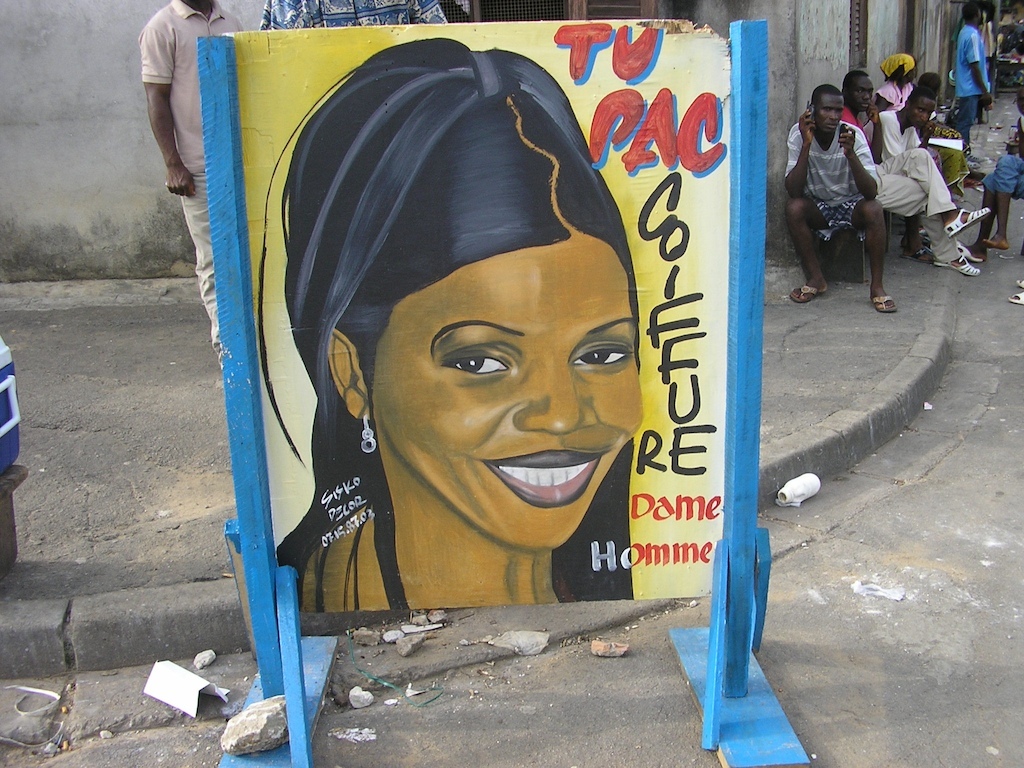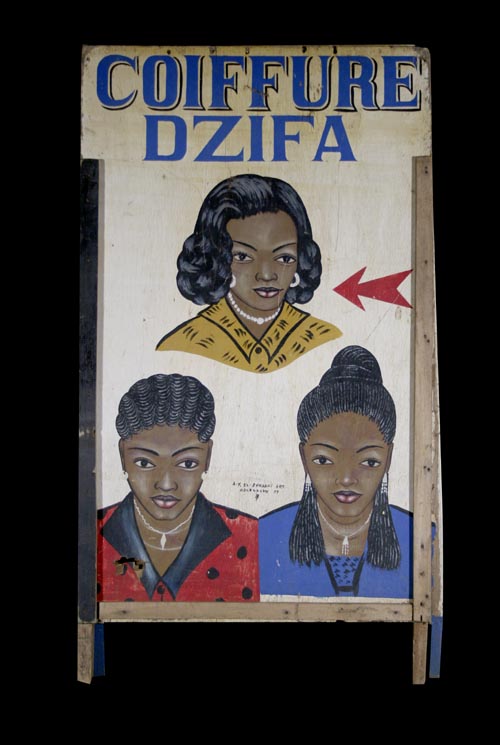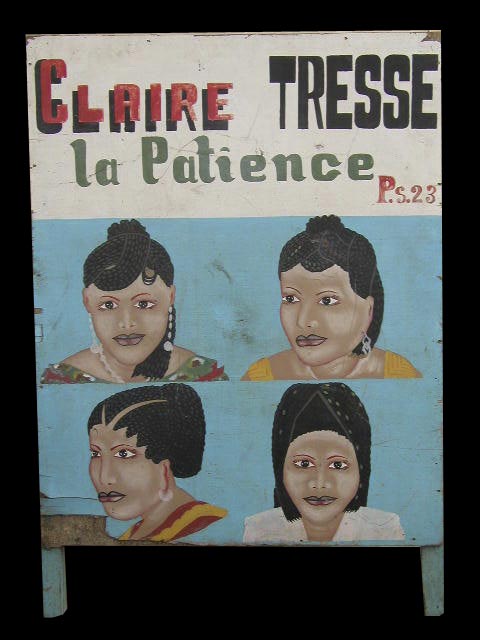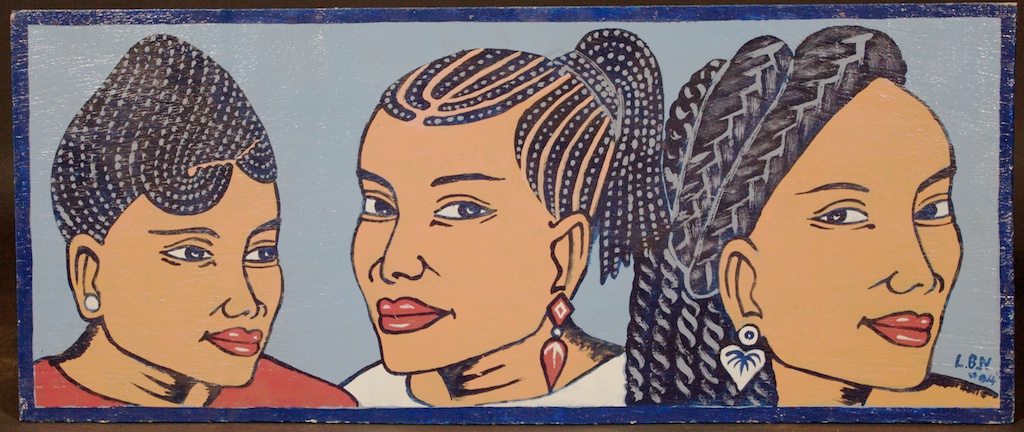54 1/2 x 10 1/4″ (138 x 26 cm)
Traditionally in Africa many small, often ambulatory businesses have used hand-painted, hand-constructed signs to advertise their business. The business person may have an actual store front but more often just sets up shop along any street and moves around town from day to day as the business prospects appear better in different parts of town. In the case of people who cut hair, men’s or women’s, this is a very common option in all parts of Africa. To support those people in business there are very accomplished artists who make their living as commercial artists, painting signs for any business, itinerant or in a fixed location. This sign was painted by hand by a commercial artist for a barber who carried the sign with him as he moved from place to place to cut men’s hair wherever he could find customers. The background of the sign is one color, white throughout. There are 6 men’s heads, all in a line, horizontally. They are all looking to the left except the one on the far right which is looking forward. They all have different faces, different shades of skin color, different clothes, different hairstyles. Three of them have beards and mustaches. The head furthest to the left is of a light-skinned man wearing a dark blue shirt with a haircut where there is only hair on the top of his head, with the hair above his ears shaved off all around his head. There is a name, Femi, and a phone number 07-63-33-38 written in pen on the white part of the sign, just to the right of this head. It’s not clear why that name and number is there. The man whose head is painted immediately to the right of that head, the second from the left, is wearing a black shirt with white designs. He is a darker-skinned man with a full head of hair and long sideburns. Between that head and the next one, the second and third heads from the left, is another name and phone number, Marie Danielle, above the number 05-26-43-99, and Celine, possible the continuation of the name, below it. The next man whose head is represented, the third from the left, is a light-skinned man with a haircut very similar to the one furthest to the left except that the top is a little longer, standing up straight, though still quite short. This man wears a green shirt with black designs. He has a dark, full goatee beard and mustache combination. The next man to the right, the 4th head from the left, is a darker-skinned man wearing a dark blue shirt with cross-snapped designs. His head is shaved bald; he has a less full, lighter full goatee beard/mustache combination. The next man to the right, the 5th from the left is a light-skinned man wearing a green shirt with black designs. He only has hair on the top of his head, with a distinct part, on the left side of his head. Immediately to his right, along the bottom of the sign, is the word “Bayo” with an arrow in the shape of an S, pointing down, more than likely the signature of the artist. The head furthest to the right is of a man wearing a dark blue shirt with black designs. He is a dark-skinned man with a full head of hair but no sideburns and a high forehead. He has a dark, full goatee. His hair is partially incomplete as the upper right corner of the sign has deteriorated with use, its veneer partially gone from those parts of this man’s hair.
The sign is painted on a thin piece of wood the top veneer of which has begun to separate a bit from wear from the rest of the wood on which the sign is painted, on the ends, but primarily on the right end. I would conclude that the barber who used this advertising tool tended to display it with the right end down, vertically, even though the design is horizontal. This would have rendered the sign much more visible than if it were placed horizontally on the ground. As there is little wear along the longest side, the bottom of the design this is the most reasonable probability. All over the surface of the painting there are small marks, evidence of use. This form of African art is contemporary; these signs continue to be made although currently the trend seems to be to more professionally printed signs on paper which is now cheaper than hiring an artist. This, therefore, is one of the last of a dying art. This sign was well used for some time but not so old as to have been worn as much as some of older signs. Except for the deterioration of the right side, the bottom end as it was displayed, it is in very good condition.





Reviews
There are no reviews yet.